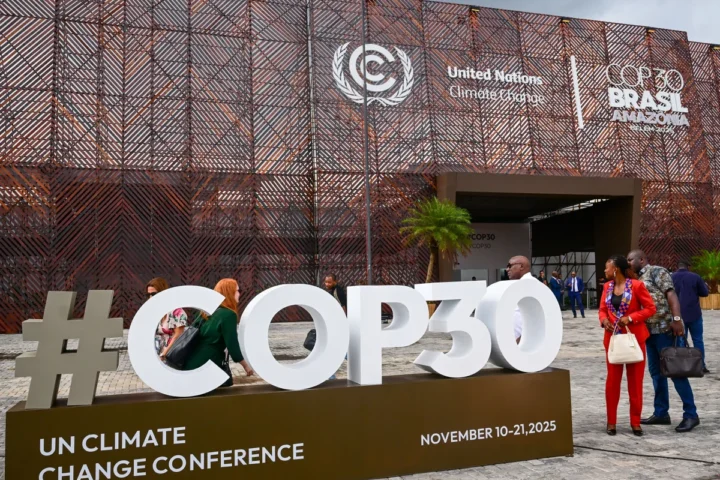When President Donald Trump took the stage at the 2025 U.N. General Assembly, his denunciation of the “extreme cost” of the green transition drew predictable outrage from environmental advocates and diplomats. Yet, behind his trademark bombast lies a question worth taking seriously: Has the global climate movement oversold the promise of cheap, renewable energy?
A Speech that Hit a Raw Nerve
Trump’s speech was classic populism — part performance, part provocation. He accused global elites of profiting from climate alarmism while ordinary people pay the price through soaring electricity bills and taxes. Predictably, world leaders grimaced and laughed. But their discomfort stemmed not just from Trump’s theatrics — it was from the reality that the economic pain of the energy transition is becoming increasingly hard to ignore.
Across Europe and parts of the United States, electricity prices have risen sharply even as governments pour hundreds of billions into wind and solar. Meanwhile, fossil fuels remain indispensable for stabilizing power grids. Trump’s broadside, however hyperbolic, taps into growing discontent among voters who feel that “green” policies benefit consultants and corporations more than consumers.
The Myth of Cheap Renewables
The article’s central argument — that the notion of cheap solar and wind is an illusion — rests on a crucial distinction often glossed over in public debates. Wind and solar are inexpensive when they work. But modern economies require power all the time, not just when the weather cooperates. The need for fossil or nuclear backup — or expensive batteries that can store energy for only minutes or hours — turns “cheap” renewables into costly systems once reliability is factored in.
Empirical evidence backs this up. Germany, Spain, and the U.K., all early adopters of large-scale renewable energy, now face some of the world’s highest electricity prices. The article cites data showing that every 10% increase in wind and solar’s share correlates with higher consumer power costs. That’s not a coincidence — it’s a consequence of physics and grid economics.
The Global Divide: Rich Ideals, Poor Realities
Perhaps the article’s most persuasive point is its examination of developing nations. Despite Western rhetoric about “green development,” poorer countries are still choosing coal and gas. In 2024, China, India, and Bangladesh all added more fossil capacity than renewable — not out of denialism, but necessity. Reliable power drives growth, and intermittent sources can’t yet sustain industrial economies.
This underscores a deeper moral paradox: wealthy nations promote costly green policies abroad while cushioning their own citizens through subsidies. The United States hides the true cost of its energy transition behind $60 billion in annual subsidies, making electricity appear cheaper than it really is. Meanwhile, poorer countries, denied similar fiscal flexibility, bear the full brunt of high renewable costs — and opt out.
Beyond Trump’s Rhetoric: The Real Path Forward
Still, while Trump’s critique of the current climate orthodoxy lands a few punches, his approach risks missing the point. Dismissing climate action entirely is as shortsighted as blind faith in solar and wind. The real challenge is not whether to pursue decarbonization, but how.
The op-ed’s conclusion offers a pragmatic alternative: focus on innovation over ideology. Instead of subsidizing existing technologies that can’t yet replace fossil fuels, invest in research that could make clean energy truly competitive — next-generation nuclear, geothermal, advanced storage, and synthetic fuels. This “innovation-first” approach aligns more with historical progress (think of the space race or the internet revolution) than with today’s politically driven subsidy regimes.
A Reckoning for the Climate Consensus
Trump’s UNGA moment may be remembered less for his words than for the reaction they provoked. His speech forced a reluctant establishment to confront the uncomfortable truth that the current energy transition model — heavy on virtue signaling, light on results — is not delivering affordable or reliable energy.
That doesn’t make Trump a climate visionary. But it does make his critics’ reflexive dismissal look increasingly defensive. As energy costs rise and grid reliability falters, the green movement faces a credibility crisis. Its future will depend on whether it can pivot from moral grandstanding to material problem-solving.
Honesty Before Ideology
The world doesn’t need more summits or slogans about “net zero.” It needs honesty about the limits of current technologies and the courage to invest in better ones. Trump’s bluntness — though politically charged — has reopened a conversation elites would rather avoid: the real cost of “cheap” renewables.
In that sense, his speech did what few climate conferences ever do — it forced the world to confront the numbers, not just the narratives.











